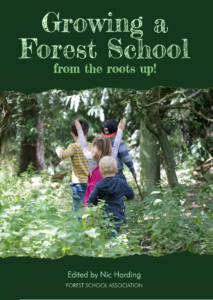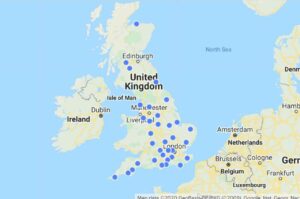My son, James, is a very keen birdwatcher. Last year, aged 15, his request for a combined Christmas and birthday present was a trip to the Cairngorms so that he might get the opportunity to see some bird species ‘unavailable to view’ here in Liverpool. And so it was that last Easter, he and I spent 3 extraordinary days in and around Grantown-on-Spey. We visited forests, moorland, the coast, lochs, privately-owned and RSPB reserves. We enjoyed guided walks with experts, sharing and gaining tips from other keen birders – and we even enjoyed a chance meeting with Iolo Williams from Springwatch who himself was leading a wildlife holiday there. (Iolo very generously shared tips with James about a career in conservation. James listened carefully to his tips and anecdotes. It transpired, a few months later, that James had bunked off school in order to go birdwatching. His rationale included the words, “Well, that’s what Iolo did…”)

Some days consisted of walking and walking; other days consisted of waiting and waiting. Either way, we were richly rewarded with sightings of crossbill, crested tit, Slavonian grebe, mountain hare and some truly amazing views of ospreys.
We drove away from Grantown-on-Spey on our last day very reluctantly. By 3.30 in the afternoon we were still only 40 minutes away from the town. We enjoyed something of a diversion – only a small amount of time in terms of driving, but when the diversion is to Loch Insh to where a pair of ospreys have just returned, well, what’s the hurry? We were following some delightfully vague instructions from other birders – “turn off when you see the sign to Kincaig, follow your nose and then park up where you see other cars…” I suggested to James that this might be something of a wild goose chase. With his usual chipper optimism, he said, “Come on, Mum! What have we got to lose?” Weirdly, those instructions were spot on. We turned off, followed our noses and parked up just as other twitchers were returning to their cars. They told us excitedly that the ospreys were back. We just had to follow the little path up the hill to the side of the church and we would see them, on the little island in the middle of the loch. And so it was. An extraordinary view of some extraordinary birds. We couldn’t believe our luck. Looking at their nest, we swayed between marvelling at its defiance of physics and worrying at the precariousness of it all. We moved when we felt it fair to allow others ‘our’ viewpoint – but we had enjoyed it for 45 minutes alone.
We returned to the car to start the journey home, hoping to find a picturesque spot en route for our picnic lunch. As I started to reverse out of the parking space, the rear windscreen framed an invitation. I was looking at the loch shore with an empty bench.

“James, why are we going?” I asked.
“What do you mean?”
“I mean, we’re leaving to find somewhere beautiful for lunch. But look at that! Could we do better than that? Why don’t we just stay here?”
He agreed. The car went back into first gear and I parked again. We walked over to the bench with our picnic and cheerfully tucked in. Then, in the middle of our lunch, from the bushes on the lochside appeared a photographer, laden down with tripod and telephoto lens. It would have been rude not to stop him and ask him what he had seen, right? And doubtless, beyond cheeky, on finding out that he was a professional wildlife photographer, to ask him if we could see just a few of the shots he had taken that morning…? He explained it had been a busy morning for the ospreys as a 3rd osprey had appeared and made an attempt to take over the nest. He had captured all this on his camera – and he showed us. He also suggested that where we had been standing previously was not the best spot for a view of the nest. He suggested we follow the shoreline for an even better sighting. We thanked him as he left, and I turned to James who – had disappeared. The bench held his half-eaten sandwich and opened packet of crisps. James, of course, had followed the photographer’s tips, and without hesitation was picking his way along the shoreline to get the better view. Muttering under my breath, (probably the likes of “No no, don’t mind me, I’ll do this…”) I packed up the picnic and followed him. The view we enjoyed from the shoreline will stay with me forever. We watched, incredulous, as these magnificent birds added to their nest, came back with fish and saw off crows. We even watched as they mated. We just couldn’t believe our luck.
This ‘luck’, I believe, forms such a significant part of the joy of wildlife and bird watching. Because for every extraordinary sighting such as this, there are the numerous trips that draw blanks, or queries over identification. Indeed, the day before this, we had waited at Spey Bay for 3 hours for the tide to come in, as the tide also brings the osprey. The tide did indeed bring the osprey – mobbed by gulls and crows. A 3 hour wait for a 40 second sighting. We were delighted, but, of course, had no idea what the next day had in store for us: a reward richer than we had ever imagined.

The only way it seemed possible to finally put the car into reverse, to leave the parking space, and to actually leave and head home, was to vow that we would return next year. So again, this year, James’ present request was a trip to the Cairngorms. So, at the beginning of the year, we booked for a few days at Easter. Obviously, along with so many others, our holiday plans were thwarted. (No doubt, the wildlife is flourishing without the human traffic such as ours). Of course, we are not alone in our disappointment. An e-mail arrived from the hotel where we stayed, including a message from another client, Ashley, who was due to be leading trips in the Cairngorms. To ‘offset’ his disappointment, he has set up a worldwide garden watch. It’s on May 9th. His message, and details of how to get involved, are pasted here as I thought some of you might be interested in getting involved. He – like us – is taking more notice (and delight) in the birds in our garden and in the local woodlands.
“Like many of you, I’ll sadly be missing out on my annual spring visit to the [Cairngorms], but one good thing about being in lockdown is we’re all finding out a lot more about our garden birds. Even as I am writing this, I was alerted by the sound of an alarmed crow outside, I reached the window just in time to see a Hobby fly past like a bullet from a gun. Another first and in fact the 53rd species of bird seen from our small suburban Worcestershire garden during April…”
With the world currently on hold and us all finding new things to occupy our time, I came up with an idea to bring together all the garden bird sightings for one day and have launched the ‘Worldwide Garden Birdwatch‘ for May 9th, giving everyone the opportunity to contribute their garden bird sightings from around the world. It is free to take part, but I have also set up a Just Giving page to raise some funds for the RSPB, who will be finding this a very difficult period to keep its conservation projects funded, so every donation, no matter how small will help.
At time of writing, we have close to 20 countries involved and people signed up across all corners of the UK, so the list of birds will be quite extensive. So please take part in what will be a fun and very interesting day of birdwatching.
How to take part?
- Simply list the birds you identify by sight or sound from your garden or from your window, anytime between midnight and midnight on Saturday May 9th. The bird doesn’t have to be in your garden, ‘so long as you are’ and spend as little or as long as you like on the day.
- Please send by email in advance, a photograph of your garden, or the view from your window, where you will be doing the birdwatch. Also let us know where you are in the country/world. You’re photo will be added to the map and will feature when we publish the final results.
What will happen on the day?
- Ashley will be posting updates of his garden observations on Facebook and also sharing those of others, or you can share your news by text to Ashley on 07704 189835 or email experiencenaturetours@gmail.com.
- Once you’ve compiled your sightings, just email them over to us on experiencenaturetours@gmail.com in whatever format is easiest for you.
- Why not also submit your sightings to ‘Birdtrack’ or ‘eBird’, so they can make scientific use of your observations.
Where can you see the results?
- The full list of birds seen and a photo collage of the gardens will be posted on Ashleys blog, no later than May 17th.
How can I donate?
- Simply click on this link and you’ll be able to donate to the RSPB through the Just Giving Page
If you would like to read more about ospreys James recommends a chapter on the osprey in the book “Raptor” by James Macdonald Lockhart. In his words, “It’s got unusual information that you don’t find anywhere else.”
Or why not take a look at the LinkedIn group FSA Sparks for the Forest School Community to share your your thoughts on bird watching in Forest School.




